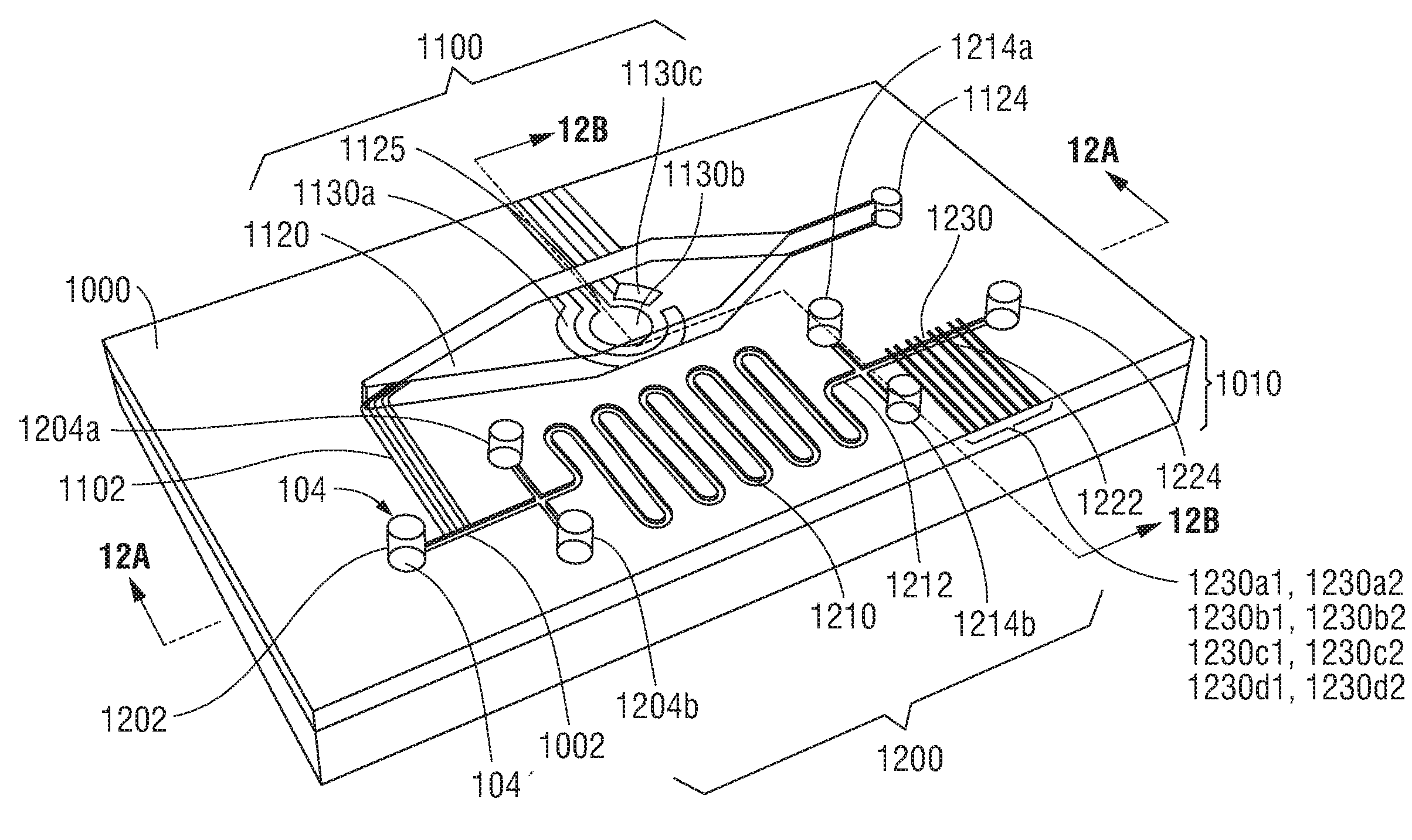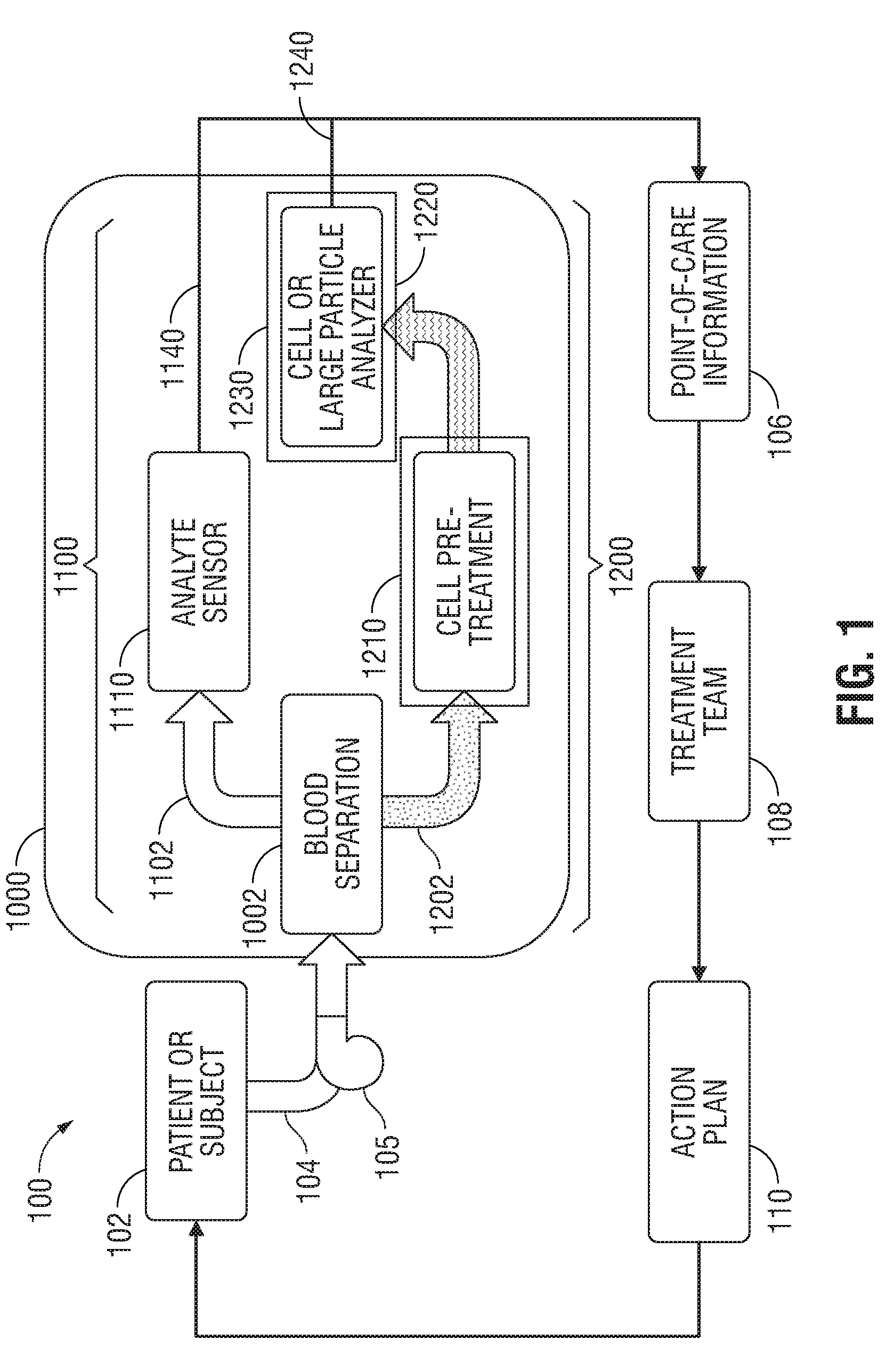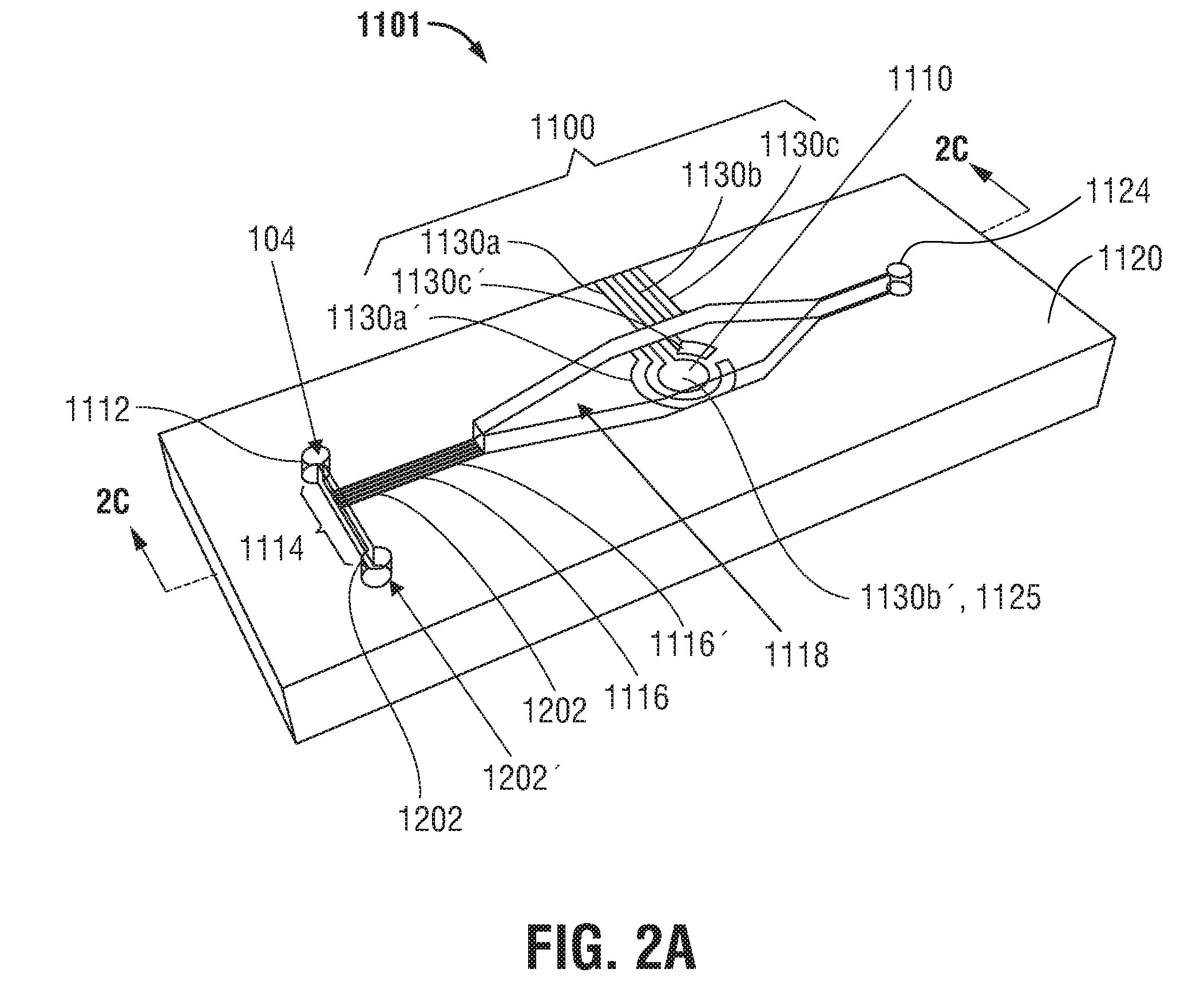Integrated and standalone label and reagent-free microfluidic devices and microsystems for differential white blood cell counts
a microfluidic device and white blood cell technology, applied in the field of substances detection, can solve the problems of limited approach, inability to achieve a full (five-part) white blood cell differential, and inability to achieve optical measurements,
- Summary
- Abstract
- Description
- Claims
- Application Information
AI Technical Summary
Benefits of technology
Problems solved by technology
Method used
Image
Examples
Embodiment Construction
[0045]A microfluidic device relying solely on impedance measurements to establish a differential white blood cell_count as disclosed herein introduces a number of improvements over previous designs. The design according to embodiments of the present disclosure employs coplanar electrodes, simplifying device assembly as compared to parallel electrodes not least by reducing the number of physical layers from three to two. Furthermore, the flow channels are defined in polydimethylsiloxane (PDMS) fabricated by established molding techniques. This straightforward approach again eliminates complexity over the use of photolithographically patterned polyimide and micromilled polymethyl methylacrylate (PMMA).
[0046]Rather than employing chemical reagents to eliminate erythrocyte interference as well as enhance leukocyte differentiation, pure water is employed. For eventual clinical application, limiting the amount of required chemicals is an important consideration. Exposure of the cell strea...
PUM
| Property | Measurement | Unit |
|---|---|---|
| diameters | aaaaa | aaaaa |
| diameters | aaaaa | aaaaa |
| diameters | aaaaa | aaaaa |
Abstract
Description
Claims
Application Information
 Login to View More
Login to View More - R&D
- Intellectual Property
- Life Sciences
- Materials
- Tech Scout
- Unparalleled Data Quality
- Higher Quality Content
- 60% Fewer Hallucinations
Browse by: Latest US Patents, China's latest patents, Technical Efficacy Thesaurus, Application Domain, Technology Topic, Popular Technical Reports.
© 2025 PatSnap. All rights reserved.Legal|Privacy policy|Modern Slavery Act Transparency Statement|Sitemap|About US| Contact US: help@patsnap.com



